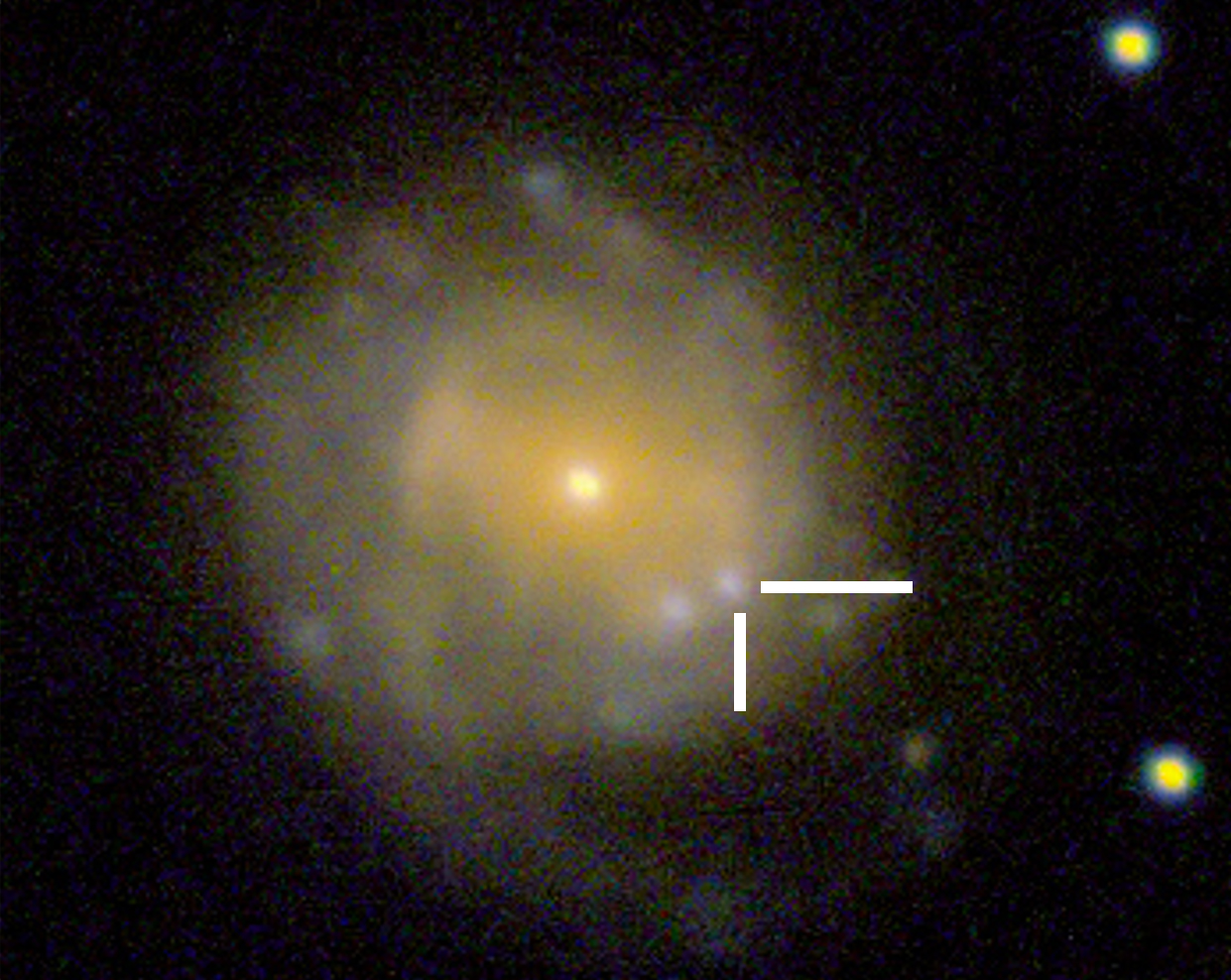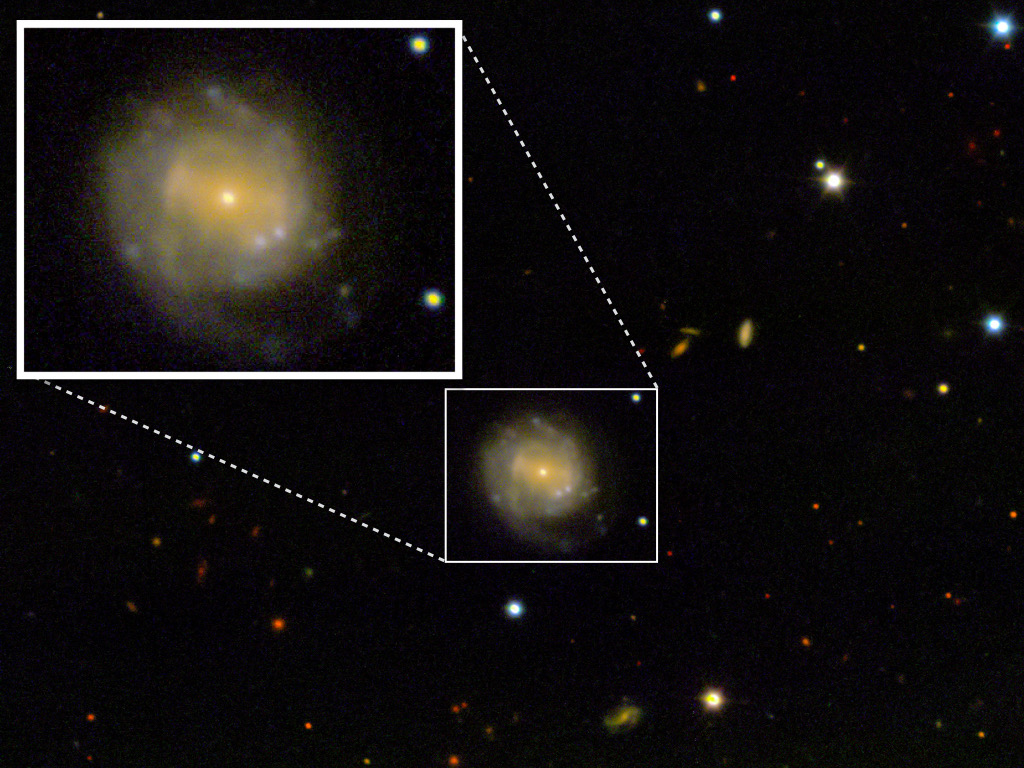Astronomers may have just witnessed the first few moments of a black hole's existence.
A weirdly bright and brief blast dubbed "The Cow," which researchers first spotted last June, was likely generated by a newborn black hole or superdense stellar corpse called a neutron star, a new study reports.
"Based on its X-ray and UV [ultraviolet] emission, 'The Cow' may appear to have been caused by a black hole devouring a white dwarf," study lead author Raffaella Margutti, an assistant professor of physics and astronomy at Northwestern University in Illinois, said in a statement. (White dwarfs are the compact cores left over when relatively small stars like our sun die. The most-massive stars die in violent supernova explosions, with their remnants collapsing into denser-still neutron stars or black holes.) [Watch: Did Munching Black Hole Trigger 'Cow’ Explosion in Space?]
"But further observations of other wavelengths across the spectrum led to our interpretation that 'The Cow' is actually the formation of an accreting black hole or neutron star," Margutti added. "We know from theory that black holes and neutron stars form when a star dies, but we've never seen them right after they are born. Never."

The Cow was a relatively nearby event: It flared up about 200 million light-years from Earth, in the Hercules constellation. Astronomers discovered the outburst using the Asteroid Terrestrial-impact Last Alert System (ATLAS), a pair of survey telescopes in Hawaii. (The event's nickname stems from its formal designation, AT2018cow, the last three letters of which were produced using a randomized formula.)
The Cow intrigued researchers from the start. It was incredibly bright — 10 to 100 times brighter than typical supernovae — and surprisingly brief, fading away after a mere two weeks or so.
"We knew right away that this source went from inactive to peak luminosity within just a few days," co-author Ryan Chornock, an assistant professor of physics and astronomy at Ohio University, said in the same statement. "That was enough to get everybody excited, because it was so unusual and, by astronomical standards, it was very close by."
Get the Space.com Newsletter
Breaking space news, the latest updates on rocket launches, skywatching events and more!

So, researchers around the world soon trained a variety of telescopes on the puzzling light source. For example, Margutti's team studied The Cow in X-ray wavelengths using NASA's Nuclear Spectroscopic Telescope Array (NuSTAR) and the European Space Agency's International Gamma-Ray Astrophysics Laboratory (INTEGRAL) and XMM-Newton spacecraft; in radio waves using the National Radio Astronomy Observatory's Very Large Array (VLA); and in optical light using the MMT Observatory in Arizona and the Southern Astrophysical Research (SOAR) telescope in Chile.
The scientists also probed The Cow's shape and chemical makeup using instruments installed on the two big telescopes at the Keck Observatory in Hawaii.
This latter work revealed the presence of hydrogen and helium, ruling out Cow scenarios involving dramatic mergers between black holes and neutron stars, the researchers said. So, the light was probably largely generated by the newborn object gobbling up debris from its shattered progenitor.
"It took a while for us to realize what we were looking at — I would say months," said co-author Brian Metzger, associate professor of physics at Columbia University in New York. "We tried several possibilities and were forced to go back to the drawing board multiple times. We were finally able to interpret the results, thanks to the hard work of our incredibly dedicated team."
The new study will appear in The Astrophysical Journal. The team also announced its results today (Jan. 10) during a news conference at the 233rd meeting of the American Astronomical Society (AAS) in Seattle — and they were not alone.
Several other research groups presented their Cow findings at the briefing as well, and not all of them agreed with the interpretation laid out above. For example, a team led by Paul Kuin, an astrophysicist at University College London, backs the black-hole-eating-white-dwarf hypothesis.
So, there's still a lot of mystery surrounding this odd light source.

"The properties of The Cow strain nearly all models we have tried to devise to explain it," Daniel Perley, an assistant professor of astronomy at Liverpool John Moores University in England, said in a different statement.
Perley led another research team, which deems the supernova-black hole/neutron star hypothesis most compelling. He also presented at the AAS conference today.
"Whatever it is, it must involve some form of energetic and very fast explosion interacting with an extremely dense shell of material very close to the explosion progenitor," Perley said.
Mike Wall's book about the search for alien life, "Out There" (Grand Central Publishing, 2018; illustrated by Karl Tate), is out now. Follow him on Twitter @michaeldwall. Follow us @Spacedotcom or Facebook. Originally published on Space.com.
Join our Space Forums to keep talking space on the latest missions, night sky and more! And if you have a news tip, correction or comment, let us know at: community@space.com.

Michael Wall is a Senior Space Writer with Space.com and joined the team in 2010. He primarily covers exoplanets, spaceflight and military space, but has been known to dabble in the space art beat. His book about the search for alien life, "Out There," was published on Nov. 13, 2018. Before becoming a science writer, Michael worked as a herpetologist and wildlife biologist. He has a Ph.D. in evolutionary biology from the University of Sydney, Australia, a bachelor's degree from the University of Arizona, and a graduate certificate in science writing from the University of California, Santa Cruz. To find out what his latest project is, you can follow Michael on Twitter.









